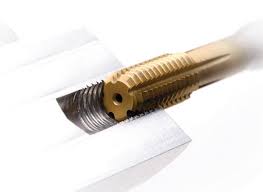Recent Posts
How fast can you produce a thread?
Posted by on

How fast can you produce a thread?
The quality of the thread and the performance of the tap will be affected by the RPM we used while making the thread. RPM is a function of perimeter speed (typically in meters or feet per minute). Most tapping suppliers have their tables to convert the perimeter speed to RPM.
The optimum speed to produce a thread is calculated differently from how it is calculate for end mills and drill bits, because the feed rate is fixed since it is based on the pitch of the thread. A step 10 will advance .100” in one revolution and a step 20 will advance half of 10. To decide what the best speed to use will be, it is important to determine how many holes must be produced. It may be worthwhile to handle high RPM even knowing that the life of the tap will be reduced in order to achieve a shorter production time.
Finding the optimum thread speed
If we thread with a lot of speed there will be too much heat and it will negatively affect the edges of the tap. If chips are attached to the cutting edge, too large or fractured threads may occur. What will impact the decision making in terms of the speed of the tap is to a greater degree:
- The hardness or condition of the material
- Precision of the hole to be tapped
- Rigidity of the fixture, the fastener of the tap and the machine
There are different coatings and materials that can be used to work better at high speeds. Coatings can also reduce wear on our taps while threading.
 Loading... Please wait...
Loading... Please wait...
